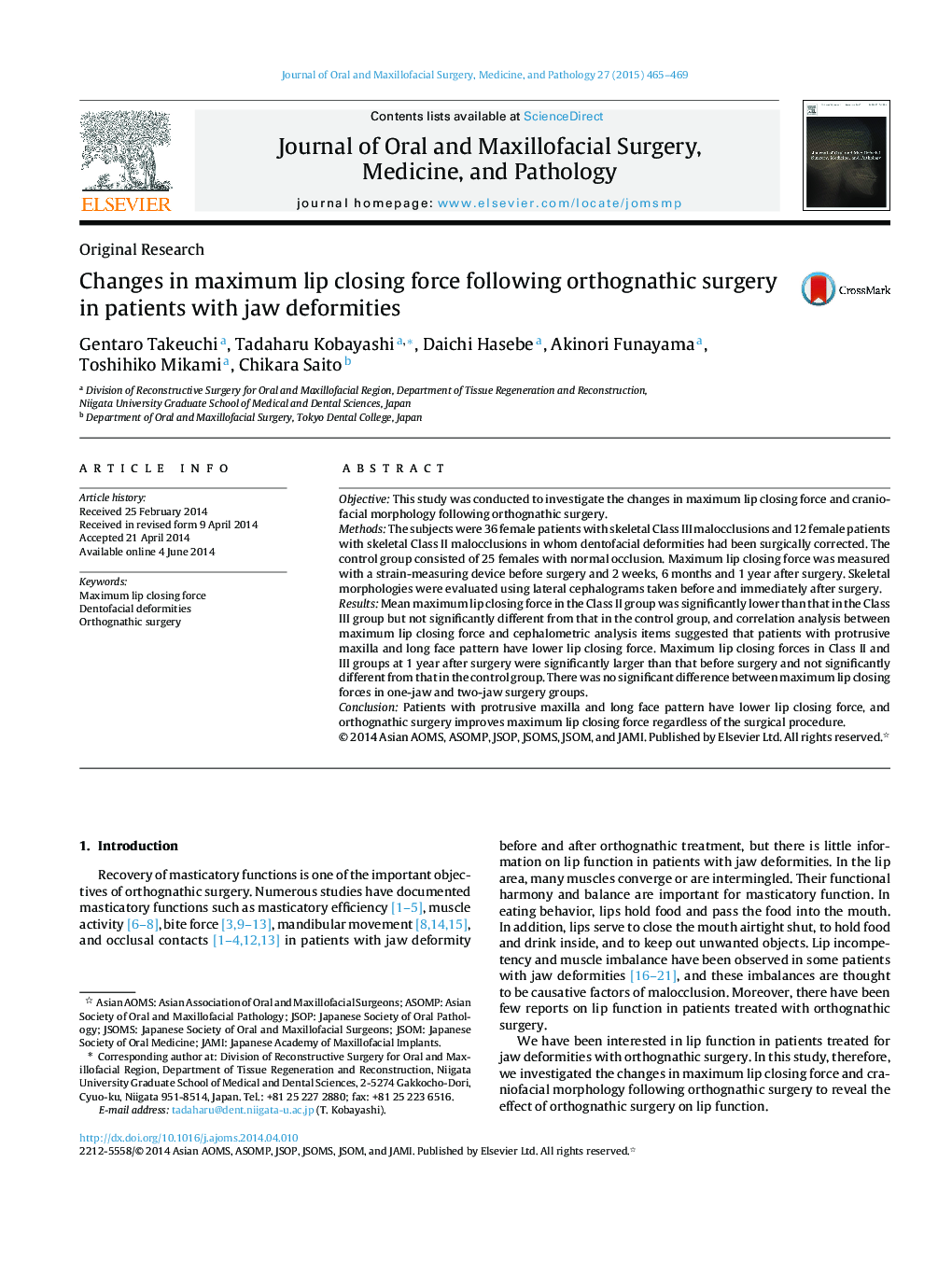| Article ID | Journal | Published Year | Pages | File Type |
|---|---|---|---|---|
| 3159769 | Journal of Oral and Maxillofacial Surgery, Medicine, and Pathology | 2015 | 5 Pages |
ObjectiveThis study was conducted to investigate the changes in maximum lip closing force and craniofacial morphology following orthognathic surgery.MethodsThe subjects were 36 female patients with skeletal Class III malocclusions and 12 female patients with skeletal Class II malocclusions in whom dentofacial deformities had been surgically corrected. The control group consisted of 25 females with normal occlusion. Maximum lip closing force was measured with a strain-measuring device before surgery and 2 weeks, 6 months and 1 year after surgery. Skeletal morphologies were evaluated using lateral cephalograms taken before and immediately after surgery.ResultsMean maximum lip closing force in the Class II group was significantly lower than that in the Class III group but not significantly different from that in the control group, and correlation analysis between maximum lip closing force and cephalometric analysis items suggested that patients with protrusive maxilla and long face pattern have lower lip closing force. Maximum lip closing forces in Class II and III groups at 1 year after surgery were significantly larger than that before surgery and not significantly different from that in the control group. There was no significant difference between maximum lip closing forces in one-jaw and two-jaw surgery groups.ConclusionPatients with protrusive maxilla and long face pattern have lower lip closing force, and orthognathic surgery improves maximum lip closing force regardless of the surgical procedure.
